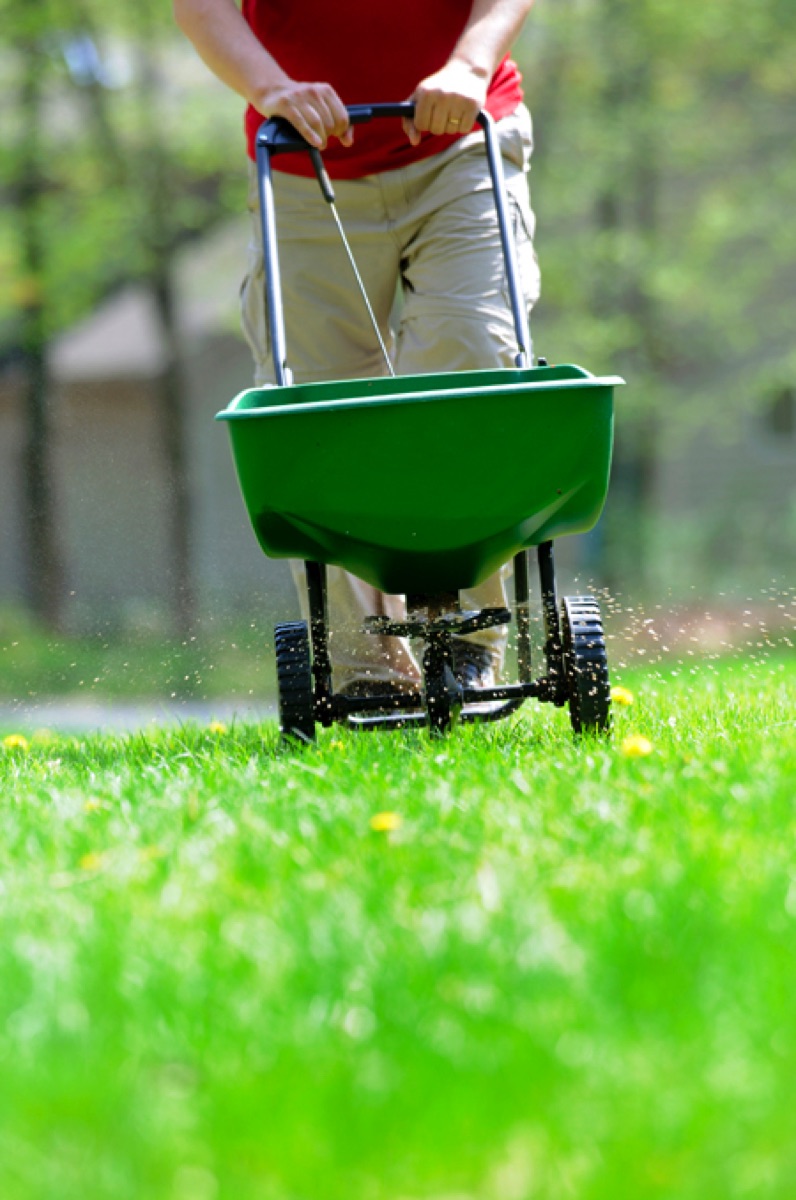 Fall is the best time to overseed with cool season turf varieties. Overseeding can significantly improve a lawn's appearance and enhance its ability to fight insects and diseases, but it's important to recognize that the term “overseeding” actually describes 2 different cultural practices:
Fall is the best time to overseed with cool season turf varieties. Overseeding can significantly improve a lawn's appearance and enhance its ability to fight insects and diseases, but it's important to recognize that the term “overseeding” actually describes 2 different cultural practices:
1. Overseeding thin lawns. Also referred to as “interseeding”. This is the process of adding more seed to existing turf to fill in bare or thin areas.
2. Winter overseeding of Bermudagrass or other warm-season lawns. This is the process of seeding with a different “winter” grass (usually Perennial Ryegrass), to provide temporary cover over dormant turf. It is more common in inland desert areas.
In this article, we'll look at the proper steps involved in both practices.
How to Overseed an Existing Thin Lawn
When the existing turf is thin or bare, applying new seed within the proper growing windows can make a big difference in the turf's appearance. You'll want to seed when several weeks of good growing conditions will follow. For cool-season lawns such as Tall Fescue, September through October is ideal, and early to mid-spring is also acceptable.
Follow These 7 Steps When Overseeding a Thin Lawn:
1. Aerate the turf before overseeding.
2. Mow the grass lower than usual, but DO NOT SCALP IT. You are only trying to open up the turf canopy.
3. Remove clippings to help the seed reach the soil.
4. Add new topsoil to low-lying bare spots or over visible tree roots.
5. Broadcast the seed or work it into the soil.
6. New seeds need Phosphorus (the middle number in NPK Formulations) to promote root growth and establishment. Apply a fertilizer high in Phosphorus like TurfGro 6-20-10 ProStarter Fertilizer.
7. Lightly cover seed with 1/8–1/4 inch of fine mulch or seed topper to maintain moisture and warmth, and protect the seed from birds.
Winter Overseeding
Overseeding a "winter" grass into a warm-season lawn like bermudagrass can be a challenge. The key is to effectively slow down your warm season turf so that it's not competing with the new winter grass (usually Perennial Ryegrass) that you're trying to establish. This is done by overseeding once nighttime temperatures are around 65 degrees or lower, and by cutting back on fertilization and watering prior to overseeding.
Before Overseeding:
1. Perform your last aggressive dethatching of warm-season turf 6 weeks before the overseed date.
2. Stop all nitrogen fertilization 4 weeks before.
3. Stop mowing 10 days before.
4. Decrease water by 50% 1 week before.
5. Drop mowing height by 1/3 3 to 4 days before.
Day of Overseeding:
6. Drop mowing height by 1/3 again.
7. Remove clippings to open the turf canopy to the soil.
8. Broadcast the seed at the proper application rade. Overseeding of bermuda generally requires 10-14 lbs per 1000 sq ft.
9. New seeds need Phosphorus (the middle number in NPK Formulations) to promote root growth and establishment. Apply a fertilizer high in phosphorus like TurfGro 6-20-10 ProStarter Fertilizer.
10. Lightly cover the seed with 1/8-1/4 inch of fine mulch or seed topper.
Free Landscape Maintenance Guide - Click Here